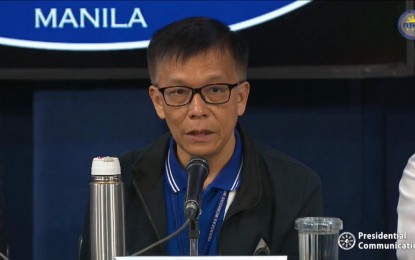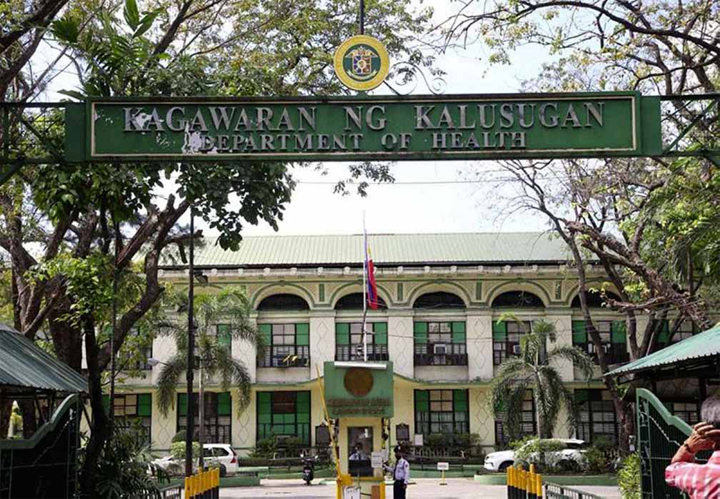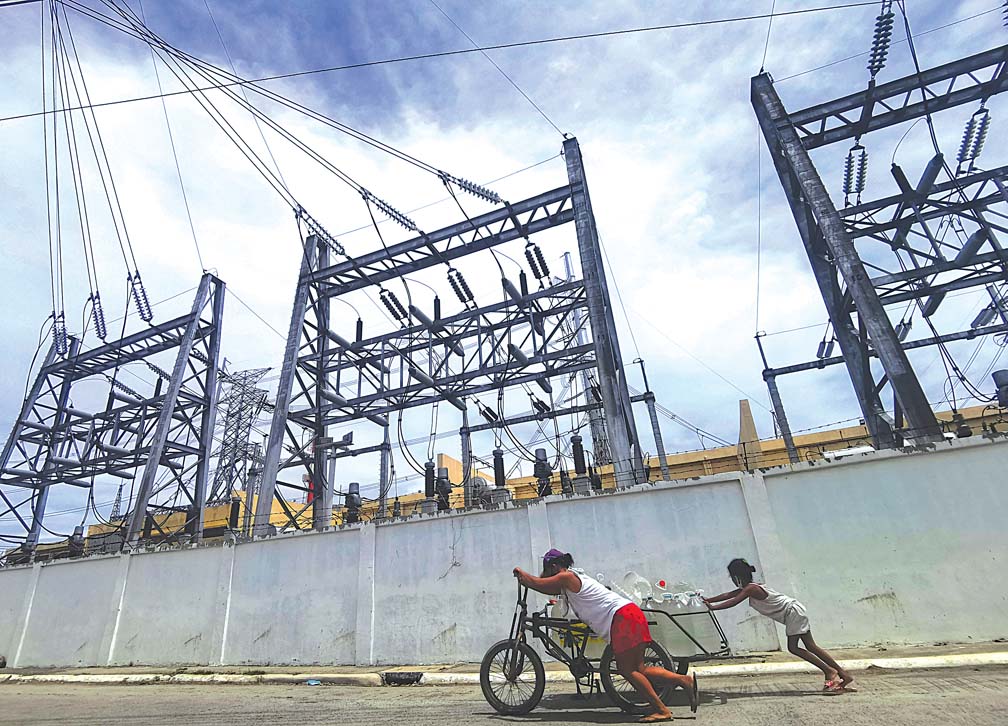THE year 2021 was a challenging year for the Department of Environment and Natural Resources (DENR), as the pandemic compounded its difficult role of balancing seemingly conflicting mandates to protect and conserve the environment, while promoting the exploitation of the country’s natural wealth.
The DENR was tasked, for one, to take the lead in rehabilitating the world-renowned Boracay Island, Manila Bay, and water bodies in typhoon-devastated areas. The agency chairs or cochairs the various interagency task forces created by Malacañang.
Below are some of the highlights of the DENR’s activities in the past 12 months.

Solid waste
AFTER aggressively campaigning for the enforcement of the Clean Water Act in Manila Bay in 2019 and 2020, the DENR started 2021 with an aggressive campaign to address the perennial garbage problem in the next two years, promising to close down all 300 illegally operating open dumpsites and replacing them with engineered sanitary landfills.
The DENR acknowledges that there are currently only 189 landfills in operation in 399 local government units (LGUs) across the country.
This number is deemed insufficient, considering that Republic Act 9003 or the Ecological Solid Waste Management Act of 2000, the law mandating the closure of open dumpsites and establishment of engineered sanitary landfills, took effect more than two decades ago.
Before the end of January, the DENR announced that it was able to close 38 open dumps in one day, confident that the DENR Regional Offices will be able to beat the agency’s self-imposed deadline, with open dumps in Bataan, Pampanga and Tanza, Cavite, being shut simultaneously.
Helping LGUs
TO help address the garbage problem at the municipal level, the DENR distributed to the LGU of San Fernando City, Pampanga, and the towns of Apalit, Candaba, Guagua and Magalang shredder-composter equipment, which can process one to two tons of compost materials within 24 hours.
By May, a total of 131 LGUs within the Manila Bay region received similar shredder-composter equipment.
Meanwhile, to build enough sanitary landfills to replace the open dumpsites, the DENR announced a plan to tap the Green Financing Program (GFP) of the Development Bank of the Philippines (DBP) to fill the financing gap in the establishment of some 300 sanitary landfills across the country.
As of this writing, the DENR has yet to come up with its final 2021 accomplishment in addressing the garbage woes, which is tied to the herculean task of rehabilitating Manila Bay under the P47-billion, 7-year “Battle for Manila Bay” rehabilitation program launched in 2019.
The DENR has been stepping up the evaluation of the 10-year-old solid waste management plans of LGUs. As of December 22, 2021, the DENR has approved 1,171 such plans, or 68 percent of its target nationwide.
Fifty-one of these were approved during the National Solid Waste Management Commission (NSWMC)-led en banc meetings on November 24 and December 7.
Water quality improvement
AMONG the objectives is to improve the water quality in Manila Bay, targeting to reduce the fecal coliform and other water pollutants to make the water body “swimmable” once more.
As of February 8, 2021, based on water samples obtained and tested from 21 stations surrounding the Manila Bay, lower fecal coliform from the annual average of 7.16 million most probable number per 100 milliliters (mpn/100ml) in 2020, to only 4.87 million mpn/100ml were recorded.
Fecal coliform level in the waters near the controversial beach nourishment project of the DENR and the Department of Public Works and Highways (DPWH) that saw the birth of the “dolomite beach” has dropped from 2.2 million mpn/100ml on January 4 to 523,000 mpn/100 ml on February 8, based on the average count from three monitoring stations.
However, this “significant” drop in fecal coliform still does not make Manila Bay safe for bathing or swimming, or other activities.
The standard coliform level for coastal waters, which is deemed safe for swimming and other similar recreational activities, is at only P100 mph/100ml.
Fish pens, cages
IN September, weeks after appealing to LGUs in the Manila Bay area to regulate fish pens and fish cage operations, DENR started to dismantle what it calls “illegal structures” in the part of Cavite.
The DENR believes that fish cages and fish pens are to be blamed for contributing to the garbage that ails Manila Bay—referring to bamboo poles, nets, and styrofoam materials used in fish cages and fish pens.
The following month, the DENR issued a policy banning the transport of bamboo poles in the Cavite area that are intended for fish pens and fish cages.
The DENR said it intends to clear Manila Bay of all illegal structures, including fish traps or baklad, oyster and mussel farms that make use of bamboo poles, nets, and styrofoam, too.
Flood-prevention measures
ALSO in February, the DENR simultaneously launched river-dredging activities to prevent flooding along the banks of the Cagayan River, Bicol River, Marikina River, Tullahan River and Pasig River.
For the rehabilitation of the Pasig and Tullahan Rivers, the DENR partnered with San Miguel Corp., using its vast financial resources, to extract thousands of tons of silt and garbage.
Also in February, the DENR simultaneously conducted massive bamboo planting activities to prevent soil erosion on select rivers, including the Cagayan River, the country’s largest and longest river, which became heavily silted due to soil erosion over the years.
In March, the DENR also launched simultaneous activities to clear Pasig River and Laguna de Bay of water hyacinth, an invasive alien species that prevents the free flow of water—something essential in keeping the water bodies healthy.
The DENR said it is tapping small fishermen to also boost their income.
Mining moratorium lifted
IN April of 2021, President Duterte signed Executive Order (EO) 130 lifting a moratorium in the processing of new mining projects put in place in 2012 by former President Benigno Aquino III’s EO 79.
Duterte’s order amended Section 4 of EO 79 on the Grant of Mineral Agreements Pending New Legislation, thereby allowing the DENR and the Mines and Geosciences Bureau (MGB) to proceed with the processing of new mining project applications.
Duterte ordered the DENR to strictly implement mines safety and environment policies, and ensure strict implementation of and compliance with recommended measures from the Mining Industry Coordinating Council (MICC), another interagency body which the DENR cochairs, involving all mining operations, including other pertinent laws, rules and regulations, and terms and conditions of mineral agreements.
The MGB is expected to craft the implementing rules and regulations of the new order that would focus principally on the grant of new mining permits and declaration of new mining areas as “mineral reservations.”
Pros and cons
ENVIRONMENTAL groups, however, believe that the order will open the floodgates to more environmentally destructive mining projects, which betrays the “legacy” of the late Gina Lopez. The latter’s short stint as DENR Secretary saw the agency recommending the closure or suspension of 26 operating mines, the cancellation of 79 inactive Mineral Production Sharing Agreements (MPSAs) near watersheds, and the ban on open-pit mining method. Of the three policies, only the open-pit mining ban remained until December, when it was finally lifted.
True enough, MGB Director Wilfredo G. Moncano said that with the lifting of the moratorium on new mining projects, the agency is eyeing the grant of new mining projects that could generate additional revenues and boost the economy within the next five years.
The MGB chief said at least 100 new mining projects are currently in the pipeline, which can generate additional revenue of P20 billion in the form of excise tax and another P1 billion in annual revenue in the form of royalty tax. These new mining projects can generate at least 42,000 new jobs in the mining sector, which currently employs around 230,000 persons.
The heated debate between, on one hand, environmentalists alarmed by the impact of liberalized mining at a time marked by more violent storms; and on the other, the economists looking to tap the mineral wealth to boost an economy pushed to recession by a pandemic, reflects the sometimes contradictory inclinations in an agency with a dual mandate as DENR. How long it can keep the balancing act is anyone’s guess.


























